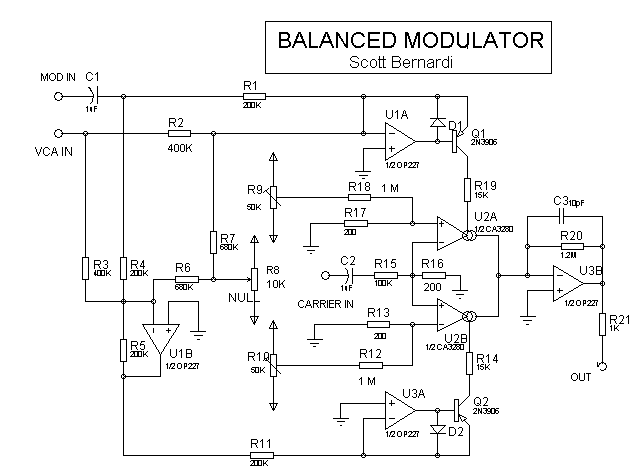
Carrier rejection trim: R10 is a carrier rejection trim. Apply a signal to the Carrier input only, and adjust R10 for minimum output.
NULLing the balanced modulator: R8 is actually a modulation input rejection trimmer.
Apply a signal to the Modulation input or the VCA input, and adjust the NULL pot until
minimum output is acheived. You would want to do this if you are using the
Balanced Modulator as a VCA.
You could leave R8 as a trimpot on your circuit board if you always wanted
to use the Balanced Modulator in the "balanced" state.